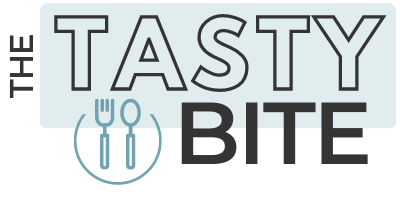Last Updated on January 31, 2025 by Karen
In today’s digital landscape, the synergy between web design services, search engine optimization (SEO), and user experience (UX) is more critical than ever for businesses aiming to establish a strong online presence. As users increasingly rely on search engines to find information, products, and services, the design of a website directly affects both its visibility and usability. Effective web design goes beyond mere aesthetics; it encompasses a strategic approach that integrates SEO best practices into the very fabric of a site’s architecture, content, and functionality. By harmonizing these elements, businesses can not only enhance their search engine rankings but also create an intuitive and engaging experience for users. This article delves into the pivotal role that web design services play in optimizing websites for search engines while simultaneously improving user experience. Genia offers expert services for web design, creating stunning, user-friendly websites that enhance your brand’s online presence and drive results. We will explore how well-structured layouts, responsive design, and user-friendly navigation contribute to higher engagement rates, lower bounce rates, and ultimately, increased conversions. Understanding this relationship is essential for businesses seeking to leverage their online platforms effectively, ensuring that they do not just attract visitors, but also retain and convert them into loyal customers.
Enhancing Website Structure for Better SEO
A well-organized website structure is crucial for both search engine optimization and user experience. Clear navigation, logical hierarchy, and well-defined categories enable search engines to crawl and index content more effectively. By employing a user-friendly layout, websites can guide visitors seamlessly to relevant information, reducing bounce rates and increasing engagement. Implementing breadcrumbs, sitemaps, and a responsive design further enhances usability, allowing users to easily find what they need, regardless of the device they are using.
Moreover, optimizing internal linking helps distribute page authority throughout the site, ensuring that important pages receive the visibility they deserve. Each link should be thoughtfully placed to create a cohesive flow of content, making it easier for search engines to understand the relationships between pages. Employing descriptive anchor text also provides context to both users and search engines, contributing to improved rankings. Altogether, these elements of a robust website structure not only bolster SEO efforts but also foster a more satisfying experience for users, ultimately driving traffic and conversions.
User-Centric Design Boosts Visitor Engagement
A focus on user-centric design significantly enhances visitor engagement by prioritizing the needs and preferences of the end user. By creating intuitive navigation, appealing visuals, and interactive elements tailored to the target audience, websites foster a more immersive experience that captivates users. Engaging layouts and compelling calls to action can encourage visitors to explore additional content, participate in discussions, or share their experiences, thereby increasing user interaction and returning traffic.
Additionally, responsive design plays a pivotal role in ensuring that websites are accessible and enjoyable across various devices, which is essential in today’s multi-platform environment. When visitors can seamlessly transition from desktop to mobile without a loss in functionality or aesthetics, they are more likely to spend time on the site and return for future visits. This commitment to a user-focused approach not only boosts engagement metrics but also cultivates a sense of trust and loyalty among users, ultimately benefiting the website’s overall performance and reputation.
Mobile Responsiveness Improves User Experience
But also positively impacts conversion rates. Users are more inclined to complete a desired action—be it purchasing a product, signing up for a newsletter, or submitting an inquiry—when their experience is smooth and hassle-free, regardless of the device they are using. A well-implemented responsive design minimizes frustration by adapting layouts, images, and navigation to fit any screen size, thus eliminating the need for excessive scrolling or zooming.
Moreover, search engines increasingly prioritize mobile-friendly websites in their rankings, recognizing the significance of providing a positive user experience. As users are more likely to abandon sites that do not perform well on their mobile devices, businesses can enhance their visibility and reach by investing in responsive web design. This alignment of user experience and search engine optimization creates a symbiotic relationship where both user satisfaction and website performance are elevated, ultimately leading to increased traffic and enhanced brand loyalty.
Fast Loading Times Increase User Retention
Website performance is a critical factor in maintaining user engagement, and loading times play a pivotal role in this aspect. When pages load quickly, users are more likely to stay and explore the content, leading to increased interaction and, ultimately, retention. Conversely, sites that load slowly can frustrate visitors, causing them to abandon their sessions and seek faster alternatives. In an era where attention spans are fleeting and competition is fierce, even a few extra seconds of loading time can significantly impact a user’s decision to remain on a site or navigate away.
The importance of optimizing loading times extends beyond mere user satisfaction; it directly influences overall business success. High retention rates not only foster repeat visits but also enhance the likelihood of word-of-mouth referrals and positive reviews. Furthermore, search engines consider loading speed as a ranking factor, meaning that faster websites are likely to achieve better visibility in search results. By prioritizing fast loading times, businesses can create a more engaging user experience, lower bounce rates, and ultimately drive higher levels of customer loyalty.
Visual Hierarchy Guides User Navigation
Effective navigation within a website is fundamentally influenced by the arrangement and prioritization of visual elements. By strategically implementing visual hierarchy, designers can lead users through content in an intuitive manner, directing attention to the most crucial information first. This approach not only aids in usability but also enhances the overall user experience by reducing cognitive load; users can quickly identify paths to follow, whether they are seeking information, making a purchase, or interacting with services.
Moreover, a well-structured visual hierarchy fosters engagement by highlighting key calls to action, thus guiding users toward desired outcomes. By employing techniques such as size, contrast, and spacing to differentiate elements, designers can create a seamless flow that enables users to navigate with confidence. This thoughtful arrangement not only contributes to user satisfaction but also positively impacts conversion rates, as users are more likely to complete their intended actions when the navigation feels intuitive and visually appealing.
Conclusion
The integration of web design services plays a pivotal role in enhancing both SEO and user experience, ultimately leading to greater online visibility and user engagement. By prioritizing responsive design, intuitive navigation, and aesthetically pleasing layouts, businesses can create a seamless experience that not only attracts visitors but also encourages them to stay longer and explore further. Furthermore, optimizing design elements for search engines ensures that websites are easily discoverable by their target audience. As the digital landscape continues to evolve, investing in professional web design services is essential for organizations seeking to remain competitive and effectively connect with their users. A well-designed website is not merely a visual asset; it is a strategic tool that drives growth and fosters lasting relationships with customers.















